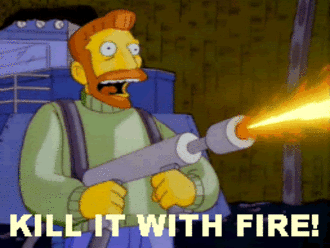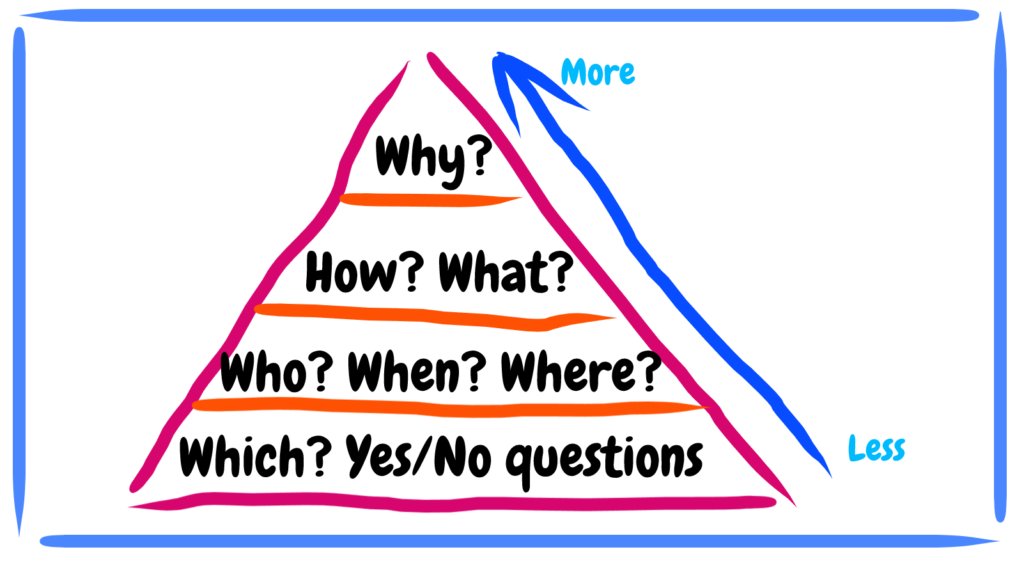Many of the books written on facilitation describe silence in participants as a negative thing, i.e. as a proof for “lack of participation”. Today I would like to share my point of view on this simple, yet powerful concept. I believe, if shaped properly by a facilitator, it can improve any meeting or session.
Imagine below situation:
You are the facilitator of a remote meeting. There are ten more people there. You only have an audio connection with the rest of the group. You ask a question, and you hear nothing but silence.
What do you do?
For me, for a long time, the answer was clear:

In the past, I was afraid of silence. I saw it as something unwelcomed, an indicator that my meeting is ineffective, and my session’s goal may be in danger. I tried to kill it – by elaborating on the topic and answering the question for participants.
Then I started to listen to the silence. It was when the shift comes. As everything – it has its purpose. I notice that silence has two objectives – static and active. By using both, a facilitator can adjust the meeting to the group and have better outcomes in the end.
Group’s mood indicator
Static silence is an indicator of the group’s mood and feeling towards meeting or its parts. It can show you if your group:
- is interested in the topic. It may indicate that you invited the inadequate group for this meeting;
- understands the purpose of the meeting and is committed to it;
- remains focused on the session.
You can increase the likelihood of success by making sure that you have a proper group of people on your meeting, and everyone understands the purpose of the meeting and share the same goal. It would be best if you also made sure that certain parts of the meeting are short enough to keep a decent level of stamina in participants. If needed, prepare breaks to allow refreshing.
You can prepare upfront to some of these needs by doing good pre-work. However, you should also be open for adjustments in your plan according to the group’s mood during the meeting. Ability to “read the room” properly during the meeting is an essential skill for that.
Always plan for the fact that no plan ever goes according to plan.
Simon Sinek
The shape of the journey is less important, as long as you can meet the goals of the meeting (set before OR refined during the session). The meeting agenda is just guidance (but an important one!). The best indicators of your meeting effectiveness are your participant’s behaviours.
Silence is not only an indicator of the participant’s activeness. It is also a tool for a facilitator to use. It is the time when you should stop to be afraid of silence but start to use it as your ally instead.
Usage of silence
The simplest way to use silence is to ask open questions (see the stances described in Scrum Master, tragic figure – the man of many faces article). They encourage participants to think. These powerful questions are a handy tool to establish the truth and common ground across the whole group.

Facilitation is a funny thing. During the meeting, I try to follow one simple rule:
Speech is silver, but silence is golden.
It does not mean I am trying to keep participants quiet. I am saying that silence encourages participants to think, reflect, and prepare the answer without any disturbances. The facilitator’s role is to assist a group of people in planning how to achieve their common objectives. A facilitator should not rush the participants.
When using silence as a tool, the facilitator gives the power to the group. Silence is disturbing – so some people would like to break it by answering the question and moving the meeting forward. As a facilitator, you have to make sure that everyone had an opportunity to be heard.
There is no “golden rule” how to do that. You may:
- wait for the next person to arise,
- ask the last speaker to nominate the next person,
- or move on.
It depends on the group, the level of participation and the energy between participants.
If you are Scrum Master and you facilitate your regular event, you can use your knowledge about individuals to select the best option. If you are facilitating a meeting between a group of strangers, you may need a social contract at the start of the session.
Using these rules on remote meetings
The same rules apply to remote meetings or conference calls. As a facilitator, you should be aware it is easier for participants to remain silent or blame the low quality of the connection. So the facilitator’s role is to keep everyone engaged.
Silence may backfire if used too often as the participants may start to play a conference call bingo.

Silence may lead to distrust since some of the participants are not contributing to the group’s work. Turned on video helps to keep everyone engaged, but it is the facilitator’s role to create an environment safe for all participants. If required, a facilitator should take proper actions.
Conclusion
Silence is an essential ally when appropriately used. From the facilitator’s perspective, silence is a very complex concept. It:
- may have different types, degrees and textures;
- is an excellent tool for how one can read the room and react to what is going on during the session.
- requires time to master, but it is time worth spent.
Try to use it – maybe you can find even more appliances.
Further reading
- Facilitating Multicultural Groups: A Practical Guide [Amazon] – Christine Hogan
- Scrum Master: The Master of the Art of Facilitation [scrum.org] – Joshua Partogi
- The Scrum Master as a Facilitator [scrum.org] – Barry Overeem





